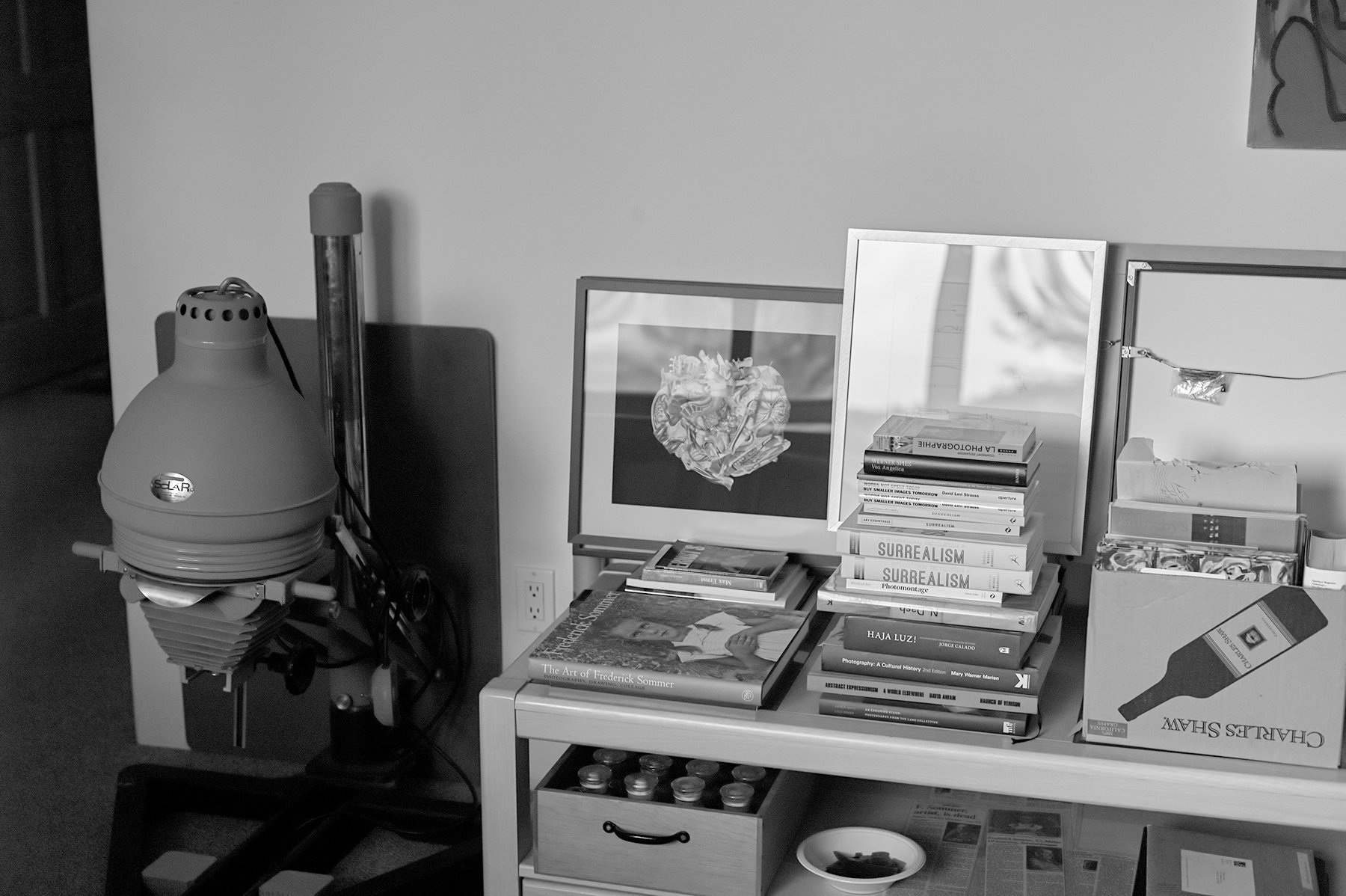Frederick Sommer
Frederick Sommer’s work as a photographer and artist has had a significant impact on my work, which I became aware of in the early ’80s
Frederick Sommers’ work transcended photography and set the stage for me to explore photography as I wanted it to be. His work had no boundaries, and his approach was unconventional and unrestrained.
I was on a scout for a project recently in Arizona, and the weather altered our schedule and halted movement. I recalled that Frederick Sommer lived in Prescott, Arizona. At the time, I was 60 miles away in a hotel, waiting for the weather system to pass. I drove to Prescott. I had no phone numbers for his foundation or any actual contact, but I hoped to see his home and studio to pay homage to this person I admired. His studio address was in his book, The Art of Frederick Sommer: Photography, Drawing, Collage. Now I had a destination.
I arrived at a home in the woods, where I saw a deer standing in the snowy brush near the house. I knocked to see if someone was there to ask if they knew of Frederick Sommer. No one answered. I began to head back to my car and heard someone behind me say, “Can I help you?" Surprised, I returned to the home and met a woman named Naomi Lyons. She was Frederick Sommer’s assistant from 1985 until he died in 1999. Frederick Sommer was 80 when Naomi began working for him, and he passed his home to her at his death. Naomi referred to him as “maestro.” She was his only assistant who could print with him in his darkroom. I was at the source.
I introduced myself to Naomi and told her about Frederick's profound influence on my work. She asked me if I would like to see his darkroom and studio. I said, “Hell yes!”. We walked behind the home, and in the forest behind was the studio building I recognized from a photograph in his book. Today it looked vastly different. Hours before my arrival, a gust of wind removed a giant pine tree.
The crash of the tree upon Frederick’s studio was stunning, creating shapes of broken wood and shards that resembled a compositional element that could be found in his photographs. The smashed wood roof completed angles and lines of darkness and shadow, bright jagged wood silhouetted by the black background of his exposed studio porch. The scene was surreal, devastating, and beautiful at the same time.
Upon entering his studio space, I was taken by the feeling that he had just walked out of the area, leaving his work at hand random yet naturally arranged simultaneously. Looking around the room, I felt like I was in familiar surroundings. The objects and items in his cabinets and table tops were every day to me: I saw the razor knife used by Frederick that shredded the large sheets of paper from the rolls that became the flowing, rhythmic images I was so familiar with. Bordering this workspace was a library encompassing every subject and many languages; he was fluent in five languages, all seeped into his mind and work. I was at the epicenter of where the brilliance of his work was realized and created.
The darkroom was emptied, a few enlargers were covered in plastic bags, and the darkroom lights and timer were nearby. I was struck by the thought of the images developed and printed in this room, some of the most remarkable work I had ever been exposed to.
Jeremy Cox, Naomi’s partner and previously Frederick’s editor and assistant, came by the darkroom to see the damage. We met, and he shared some history of his association with Frederick and a piece he created inspired by the “Maestro.”
The hour and a half I spent with Naomi visiting about her past with Frederick Sommer was a memorable day for me.

























